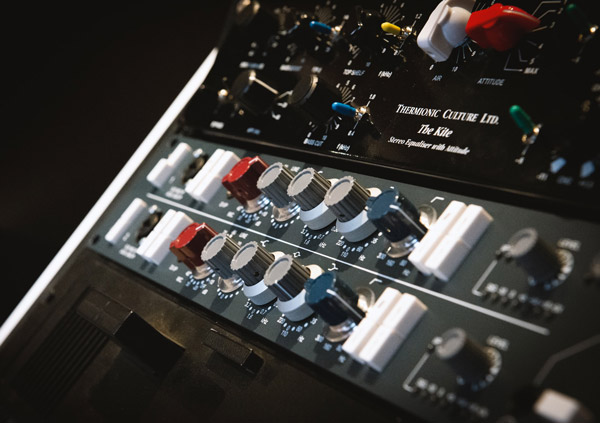Checking Your Pre-Master (Mix)
Noise: Any hiss, digital glitches, clicks or pops in your mix will become very audible after the tracks are mastered. This is because limiting and increased loudness reveal such issues in greater detail. We therefore recommend that you critically listen to your mix beforehand to spot any issues that can be fixed before the track goes to master.
Mono compatibility: Make sure you listen to your mix in mono before bouncing out the final version. You can use a “mono” button inside your DAW, or through a plugin, or on your external audio interface, if it has one. When you listen to your mix in mono, pay attention to any thinning of sounds, or even the disappearance of sounds, and a general collapse of the mix (worst-case scenario). These issues indicate phase problems in your mix.
To check phase on your overall mix or an individual instrument, use a plugin like Voxengo’s SPAN. Anything below “0” on the stereometer means out-of-phase. Don’t obsess over this, though. Most modern music sounds different in mono, particularly synths that purposefully have a very wide stereo image. However, it is good to understand how your track sounds in mono before going to master, so that you don’t have an unexpected surprise later down the line.
Master buss: Do not do any limiting on the master buss. If you use compression on your master buss as part of the mix process, make sure it isn’t too heavy, as this will hinder the mastering process. Please also be careful using saturation or FX on the master buss. Ideally, this type of processing should be done on your individual mix channels.
Start and end gaps: To avoid abrupt track starts and potential glitching when bouncing our from your DAW, always leave a small amount of silence at the start. You should do the same at the end of the track, too, after the fade out. There is no set recommendation for this but we recommend 200 ms.
Headroom
When it comes to mastering, headroom refers to the amount of space (in dB) that a mixing engineer will leave for a mastering engineer to work with. Leaving 3-6dB of headroom is usually sufficient for the mastering process, allowing for proper processing and alterations to the audio signal. This ensures that the final track sounds its best.
Furthermore, leaving sufficient headroom prevents inter-sample peak distortion when converting digital audio to analogue. Rather than using the master fader on your stereo output to lower the volume, we recommend that you ensure the individual tracks of your mix have sufficient headroom and are not clipping.
Don’t normalize your pre-master file for loudness. We will take care of ensuring the final master is at a commercial volume.
File Type
Typically, a stereo interleaved 24-bit .wav file is the most common file format used for mastering. A stereo interleaved file contains both left and right channel information within a single uncompressed file. This file is generated after the mixing process is complete and can be exported or bounced out from a digital audio workstation (DAW) like Logic, Ableton, or FL Studio. Always export your mix at the bitrate that it was created.
Once you place your order, we will send you an email with information on how to send us your file.
File Naming
Please make sure that each track is clearly labelled, including version descriptions if necessary. For example: Feeling The Night – Joe Bloggs – Final Mix [Radio Edit]. When sending multiple tracks for STEM mastering or album creation, please zip the files up in a zip folder for ease of download.
Pre-Master Evaluation
Once we receive your file(s), we will listen through to check for any problems that may hinder the mastering process such as clipping, digital pops, etc. If we find any issues, we will refer the file back to you with the appropriate recommendation.
Post-Mastering
In the rare event that you want to make a change to your master, you can take advantage of up to two revisions. However, if you submit a new file after the mastering process is complete, you will be charged for a new master.
A Word on Loudness
We master for quality before loudness, but we also appreciate that you want your music to be competitive with other tracks in the same genre. Loudness is quite a complex and often nuanced subject. However, in a nutshell, the ability to master a song “loud” and retain its quality is down to the mix. Some tracks naturally lend themselves to loudness because of the sounds used (the sound design), while others are naturally softer and lower in perceived loudness.
For electronic dance music and indie-rock we generally shoot for around 8 LUFS, but the outcome really is dependent on the track (we do what is best for the music). If you are after a specific loudness, please let us know and we can advise further. For genres such as orchestral, ballad, and easy-listening music, the outcome is going to be lower in loudness due to the nature of the music.

